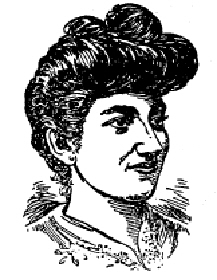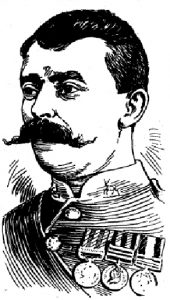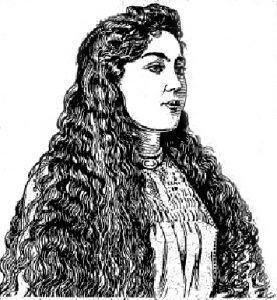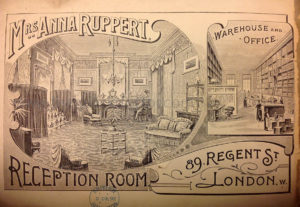
Source: Black & White, 19 March 1904
Chief among the ills to which flesh is heir in the springtime is the provoking habit of our ‘crowning glory’ to come off in handfuls, leaving us with the parlous prospect of a denuded poll.
So says a 1904 advertorial recommending Capsuloids as a hair restorer. I’m not sure to what extent people really moult in the springtime, but if did you found yourself shedding, Capsuloids were there to help.
The product started life as a general tonic. Launched in 1897 under the name ‘Dr Campbell’s Red Blood Forming Capsuloids,’ it had a wide remit:
…kill disease germs, cure chronic ailments and diseases, restore colour, health and strength, cure all irregularities, and generally build up the heart and nervous system.
Only after the turn of the 20th century did the company rebrand the product as a cure for baldness and grey hair.
Capsuloids were teardrop-shaped gelatine capsules containing a mixture of haemoglobin, olive oil, oleic acid, balsam of Peru and purified storax. The Capsuloids Company formulated the contents themselves then sent them to a manufacturing chemist, Duncan Flockhart & Co., who made the gelatine capsules and filled them with the mixture. This business relationship went through a rocky patch in 1912, when a batch of the capsules went mouldy and the Capsuloid Company tried to claim £8000 damages from the chemists. After a 19-day hearing, the courts ruled that Duncan Flockhart & Co were not at fault.
Unlike most hair restorers and dyes, Capsuloids were to be taken orally. Adverts used an illustration of a hair follicle (the one above is quite simple but there were much more detailed versions too) and pointed out that any preparations rubbed onto the scalp could not possibly reach that far into the skin. Instead, the remedy would work through the bloodstream, killing off germs surrounding the hair follicle and allowing it to get the nourishment it needed. Earlier advertising stated:
This natural iron has been extracted from the blood of carefully selected healthy bullocks, redissolved and enclosed in a gelatine covering.
Perhaps, however, this was distasteful to some, for later pamphlets emphasised that the capsules didn’t contain any actual blood or germs, just haemoglobin. In response to criticism made ‘through ignorance or self-interest’, the pamphlets also reassured women that Capsuloids would not give them facial hair:
It would require miraculous powers to make the small fine hairs on a lady’s face grow to a greater length or size than that intended by Nature. A miracle is an act which is directly contrary to Nature.
Capsuloids adverts usually incorporated a testimonial along with a picture of a satisfied customer. There are a few examples below but there were loads – a run of ads in one newspaper would use a different portrait every time. These were drawn from photographs – I’ve seen some of the originals and they are good likenesses.
.
.
.
.
.
.
.
.
.
.
.
Imitators tried to promote similar products with less catchy names such as ‘Capsulated Haemoglobin Ovals for the Hair’ and ‘Soluble Capsules of Haemoglobin’ but the Capsuloid Company gave them short shrift:
BY TAKING CAPSULOIDS you will wear luxuriant, natural HAIR.
BY TAKING IMITATIONS you will wear A WIG.






You have revealed the secret to my glossy coat!
Another great post and low on the squeamish-ometer. x
Mmmm I think I’ll wait for a while before I try and deal with my receeding hairline before I try it!